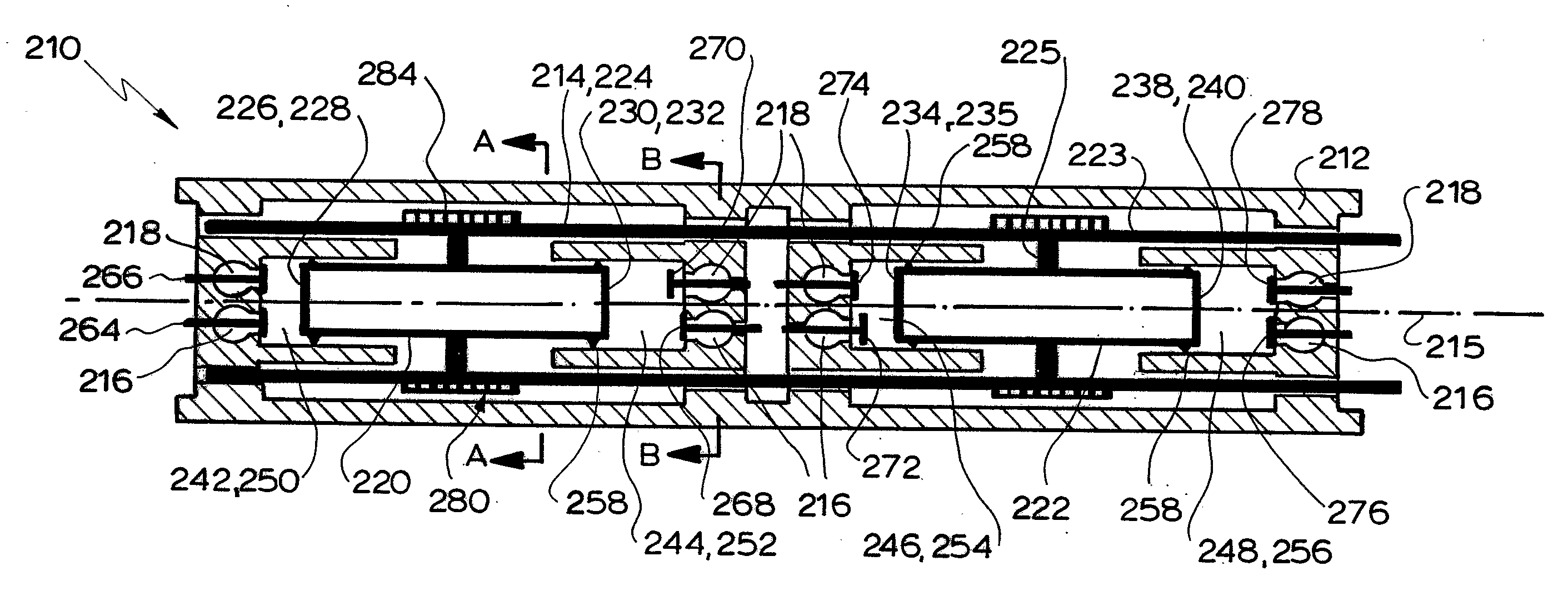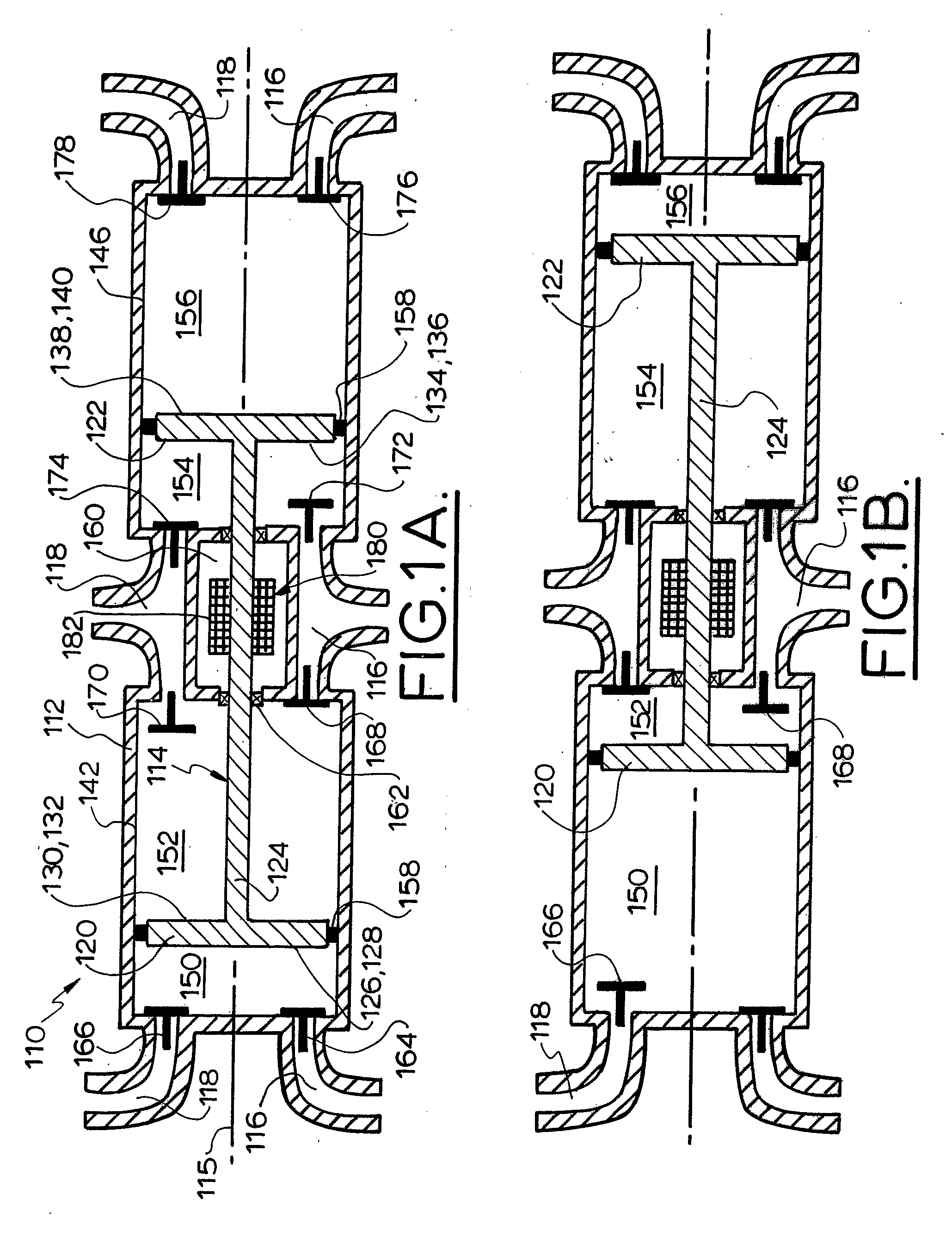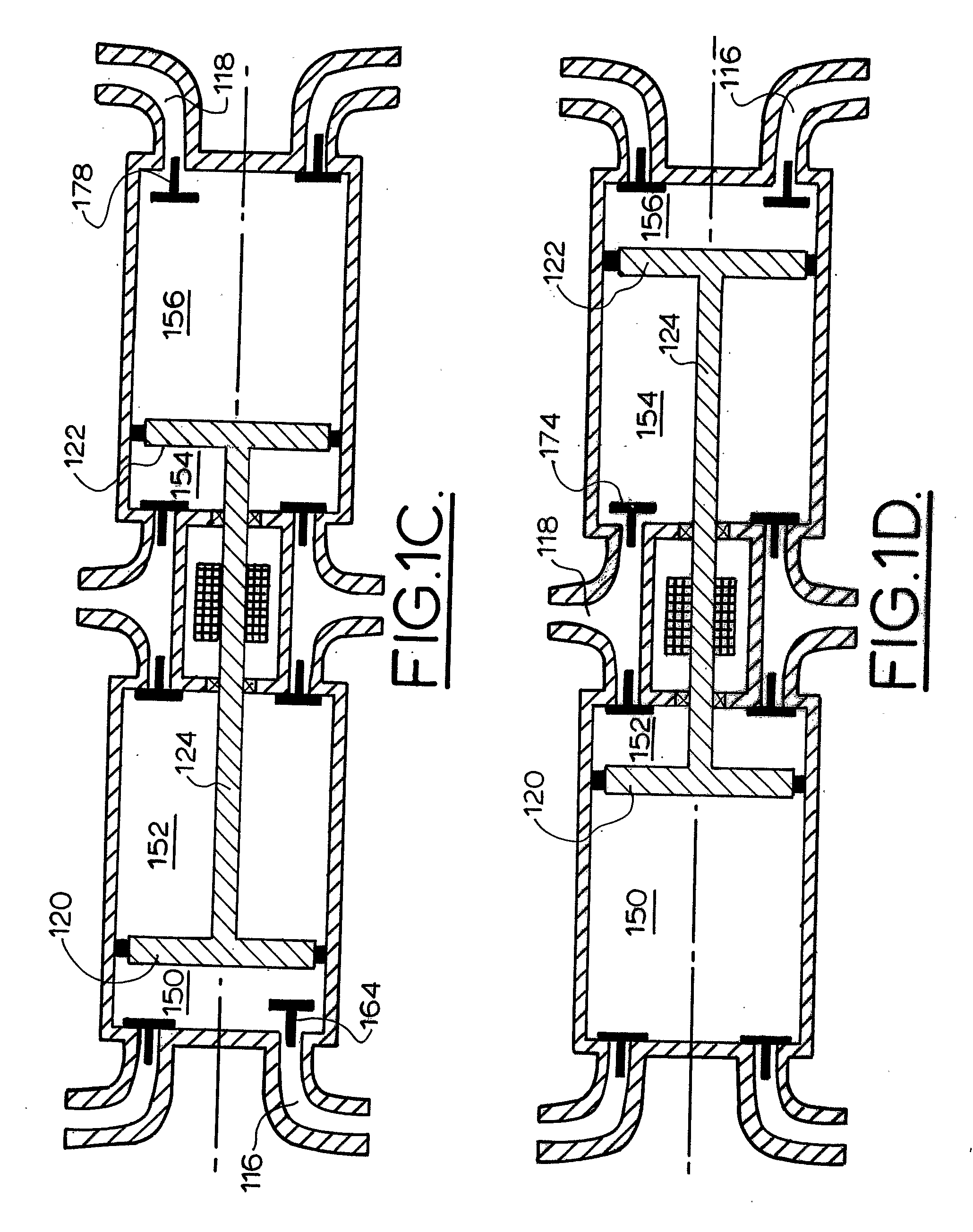Four-Stroke Free Piston Engine
a free piston engine and four-stroke technology, applied in the direction of free piston engine, combustion engine, machine/engine, etc., can solve the problems of limiting the efficiency of four-stroke internal combustion engine, affecting the efficiency of four-stroke engine, and general inacceptability of pollution, so as to improve the access to lubricating and cooling, and to add any side loading
- Summary
- Abstract
- Description
- Claims
- Application Information
AI Technical Summary
Benefits of technology
Problems solved by technology
Method used
Image
Examples
first embodiment
[0044]A first embodiment comprising a linear four stroke free piston internal combustion engine 210 is depicted in FIGS. 2A to 2C. The engine 210 comprises an engine block structure 212 and a rigid shuttle 214 mounted to the engine block structure 212 for reciprocal movement relative thereto along a linear shuttle centerline 215. The engine 210 further comprises a selectively sealable network of inlet passages 216, which communicate with a fuel / air supply (not shown), and a selectively sealable network of outlet passages 218, which communicate with an exhaust system (not shown).
[0045]The shuttle 214 comprises a generally cylindrical first shuttle part 220, a generally cylindrical second shuttle part 222 axially spaced from the first shuttle part 220 and a shuttle frame 224 rigidly fixing the first shuttle part 220 relative to the second shuttle part 222. Accordingly, the first and second shuttle parts 220, 222 cannot move relative to one another. The first and second shuttle parts 2...
second embodiment
[0051]Since the shuttle frame 224 is entirely external of the chambers 250, 252, 254, 256, the bore seals 162 and any associated lubrication of the example engine 110 are not necessary. Further, the chambers 250, 252, 254, 256 are all identical, unlike the example engine 110 in which the rod 124 compromises the second and third chambers 152, 154 and reduces the surface area of the second and third shuttle surfaces 132, 136 relative to the first and fourth shuttle surfaces 128, 140. This means that the second embodiment encounters less friction, has less components and has less possible gas leakage points. Further, since the shuttle parts 220, 222 are readily accessible from the outside, the shuttle parts 220, 222 can be easily cooled and lubricated. In contrast, it would be very difficult to deliver lubricating or cooling fluid to the shuttle parts 120, 122 of the example engine 110, without seriously compromising performance.
[0052]A second embodiment comprising a coaxial four strok...
third embodiment
[0059]A third embodiment comprising a toroidal four stroke free piston internal combustion engine 410 is depicted in FIGS. 4A to 4D. The engine 410 comprises an engine block structure 412 and a rigid shuttle 414 mounted to the engine block structure 412 for reciprocal movement relative thereto along a circular shuttle centerline 415. The shuttle 414 is also pivotally mounted on a central shaft 492 via spokes 484. The engine 410 further comprises a selectively sealable network of inlet passages 416, which communicate with a fuel / air supply (not shown), and a selectively sealable network of outlet passages 418, which communicate with an exhaust system (not shown).
[0060]The shuttle 414 comprises a first shuttle part 420 in the general shape of a toroidal sector, a second shuttle part 422 in the general shape of a toroidal sector and a shuttle frame 424 rigidly fixing the first shuttle part 420 relative to the second shuttle part 422. Accordingly, the first and second shuttle parts 420,...
PUM
 Login to View More
Login to View More Abstract
Description
Claims
Application Information
 Login to View More
Login to View More - R&D
- Intellectual Property
- Life Sciences
- Materials
- Tech Scout
- Unparalleled Data Quality
- Higher Quality Content
- 60% Fewer Hallucinations
Browse by: Latest US Patents, China's latest patents, Technical Efficacy Thesaurus, Application Domain, Technology Topic, Popular Technical Reports.
© 2025 PatSnap. All rights reserved.Legal|Privacy policy|Modern Slavery Act Transparency Statement|Sitemap|About US| Contact US: help@patsnap.com



